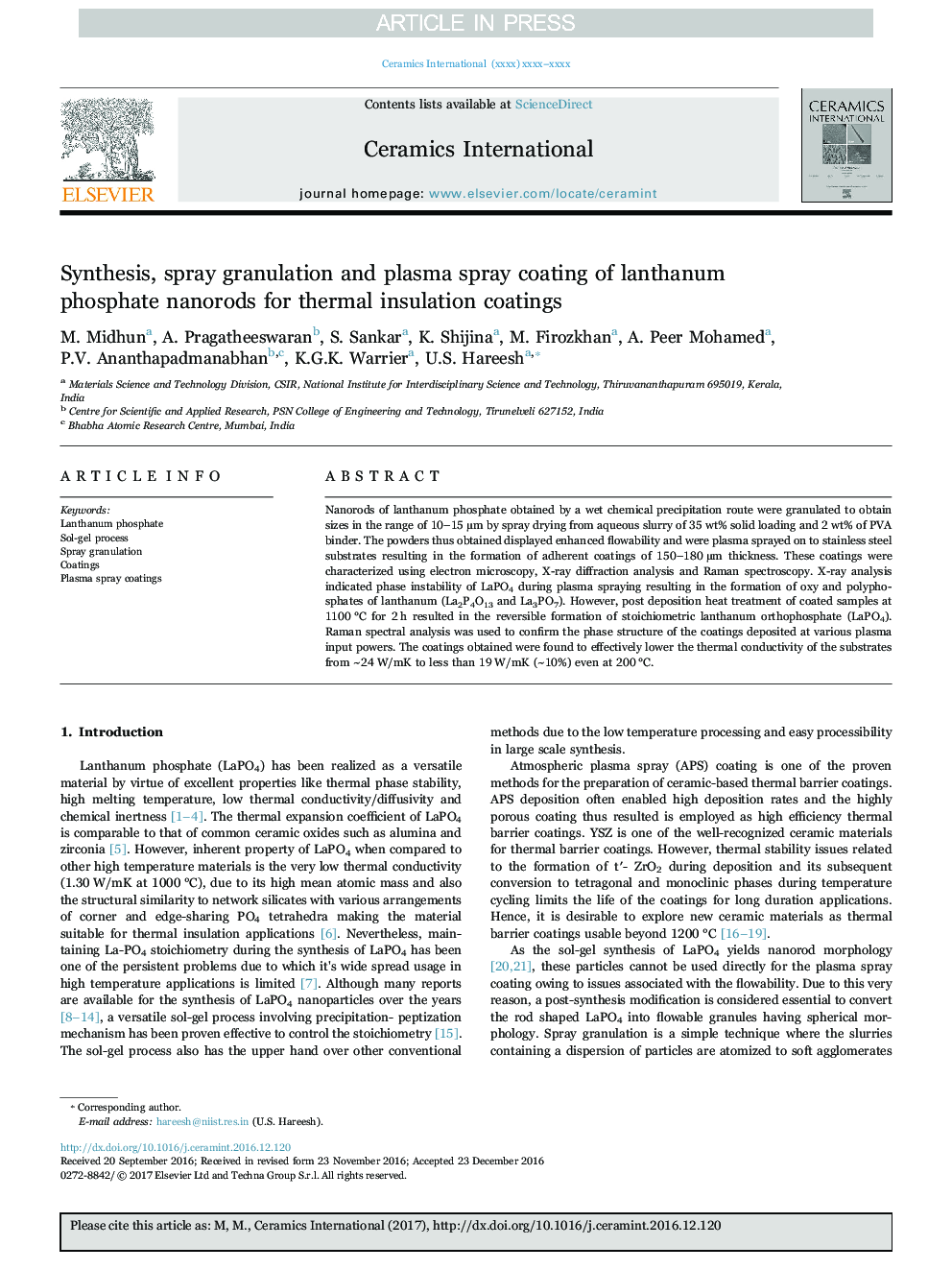| Article ID | Journal | Published Year | Pages | File Type |
|---|---|---|---|---|
| 5438613 | Ceramics International | 2017 | 8 Pages |
Abstract
Nanorods of lanthanum phosphate obtained by a wet chemical precipitation route were granulated to obtain sizes in the range of 10-15 µm by spray drying from aqueous slurry of 35 wt% solid loading and 2 wt% of PVA binder. The powders thus obtained displayed enhanced flowability and were plasma sprayed on to stainless steel substrates resulting in the formation of adherent coatings of 150-180 µm thickness. These coatings were characterized using electron microscopy, X-ray diffraction analysis and Raman spectroscopy. X-ray analysis indicated phase instability of LaPO4 during plasma spraying resulting in the formation of oxy and polyphosphates of lanthanum (La2P4O13 and La3PO7). However, post deposition heat treatment of coated samples at 1100 °C for 2 h resulted in the reversible formation of stoichiometric lanthanum orthophosphate (LaPO4). Raman spectral analysis was used to confirm the phase structure of the coatings deposited at various plasma input powers. The coatings obtained were found to effectively lower the thermal conductivity of the substrates from ~24 W/mK to less than 19 W/mK (~10%) even at 200 °C.
Related Topics
Physical Sciences and Engineering
Materials Science
Ceramics and Composites
Authors
M. Midhun, A. Pragatheeswaran, S. Sankar, K. Shijina, M. Firozkhan, A. Peer Mohamed, P.V. Ananthapadmanabhan, K.G.K. Warrier, U.S. Hareesh,
